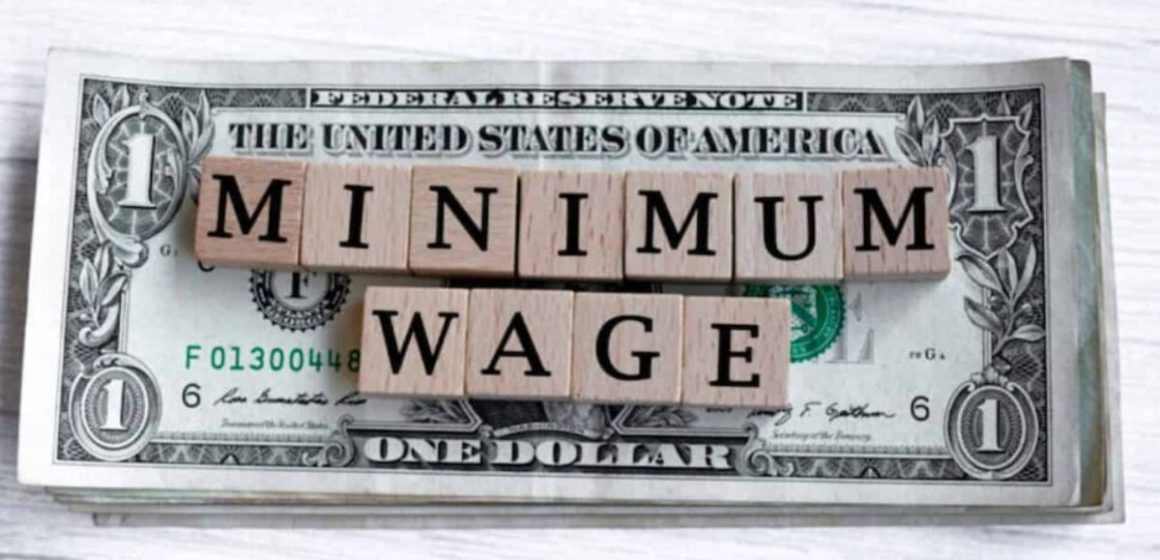In New York City, Long Island, and Westchester County, the minimum wage will reach $16.50 per hour. Meanwhile, the rest of the state will see a rate of $15.50 per hour. The state’s minimum wage rates differ according to region and industry. As of early 2024, the downstate region experienced an increase to $16 per hour, up from $15 the previous year. Upstate New York saw its rate climb to $15, compared to $14.20 in 2023.
According to MIT’s living wage calculator, which was last updated in February, an individual living in New York without children needs to earn an average of $26.86 per hour, working 40 hours a week, to sustain themselves comfortably. Another increase of $0.50 is scheduled for January 1, 2026.
Conditions That Can Freeze Wage Raises
Furthermore, starting January 1, 2027, wages in New York will be linked to the Consumer Price Index for Urban Wage Earners and Clerical Workers (CPI-W). This aims to ensure wages keep up with inflation. Also, an “off-ramp” provision allows for a freeze on these indexed increases during economic downturns or budget crises.
According to insights from the Economic Policy Institute and the National Employment Law Project, certain economic conditions pose a significant risk to wage increases, creating what they describe as a dangerous off-ramp.
Two primary factors can lead to a freeze in raises:
- A rise of 0.5 percentage points in the three-month average unemployment rate from May to July compared to the previous year.
- A drop in non-farm employment in New York during the periods from July to January or from April to July.

The Rockefeller Institute has suggested revising New York’s public school funding formula, which hasn’t been updated in 17 years, to address these economic challenges.
These economic shifts are not uncommon; they have occurred approximately once every four years since 2000. Such a freeze could potentially result in a staggering $609 million in lost wages, affecting around 1.5 million workers.
Wage Increases for Hourly Workers
Most hourly workers are set to benefit from wage increases. However, certain industries have specific rates, especially where tipping is prevalent, such as:
- Restaurants and hospitality
- Carwashes
- Hairdressers and aestheticians
- Valet parking
Under the Home Care Worker Wage Parity Law, home health aides will earn at least $18.10 depending on their location. Tipped workers will receive a minimum of $10.35, plus tips, also depending on location. Employers are responsible for ensuring their employees earn at least the minimum wage when combining tips and hourly compensation.
Understanding the Landscape of Charitable Giving in New York
In today’s landscape of charitable giving in New York, several significant trends are shaping the field. With fewer donors stepping forward, rising costs, and evolving habits, organizations are navigating a complex environment.
For employers, adhering to fair pay practices is not just a moral obligation but a legal one. Every hour an employee works must be compensated at least at the minimum wage.
Once an employee hits the 40-hour mark in a week, they are entitled to overtime pay at one-and-a-half times their regular rate. To demonstrate compliance, employers are required to maintain and provide detailed, accurate records of hours worked and payments made.
The State Department of Labor (DOL) offers comprehensive training to assist businesses in understanding and following these laws. This proactive step helps ensure that employers are not inadvertently engaging in wage theft.
Consequences of Non-Compliance
Failing to adhere to these regulations constitutes wage theft, classified as larceny in New York. If the value exceeds $1,000, it escalates to a felony. Both individuals and companies found non-compliant may face severe repercussions, including criminal charges and civil penalties. These can range from paying interest and back pay to incurring hefty fines.
If you suspect your employer has not compensated you fairly or is otherwise in violation of the law, it is crucial to take action. You can report such instances by calling the DOL at (833) 910-4378 or by filing an online complaint.
Wage Theft in New York: A Startling Reality
In a significant legal development, an October ruling by New York State Supreme Court Judge Gerald Connolly addressed pivotal issues in wage theft investigations.
These investigations, previously closed by the Department of Labor (DOL), had cited union contracts and binding arbitration clauses as limiting factors. Judge Connolly determined that such agreements could not restrict the DOL’s jurisdiction in cases of wage theft and mandated the reopening of these investigations.
A revealing analysis conducted by ProPublica in 2023 highlighted the pervasive issue of wage theft in New York. Between 2017 and 2021, there were over 13,000 documented cases, with employers unlawfully withholding more than $203 million from approximately 127,000 workers. This staggering figure was compiled using data from both state and federal DOL sources. Here’s a closer look at the sectors most affected:
- $52 million stolen from restaurant workers
- $28.4 million pilfered from healthcare industry workers
- $27.6 million taken from construction workers
- $5.9 million misappropriated from janitorial workers
- $5.9 million stolen from retail workers
- $5.8 million diverted from supermarket and convenience store workers
Governor Hochul’s Recovered $63 Million in Stolen Wages
In a notable announcement in July 2024, Governor Kathy Hochul highlighted that New York had successfully recovered over $63 million in stolen wages. This recovery effort benefitted nearly 65,000 workers between 2022 and 2024, marking a significant victory in the ongoing battle against wage theft.
The recent wage hike is designed to positively impact hundreds of thousands of New Yorkers while bolstering local economies.
Governor Hochul’s administration has consistently referenced economic research highlighting that increasing wages benefits low-income households and the working class—particularly women and people of color—alongside local industries. Fair compensation plays a crucial role in reducing poverty, decreasing social welfare expenses, enhancing worker productivity, and tackling the escalating costs of living.
In January 2023, Data for Progress conducted a survey involving over 700 residents from regions such as the Hudson Valley, Finger Lakes, Western New York, Long Island, and New York City regarding the minimum wage.
At that time, approximately 80% of respondents supported a $20 minimum wage adjusted for inflation, while about 70% believed that $20 an hour was necessary to live “at a decent level” within the state.



Leave a Reply